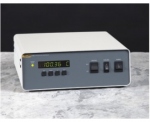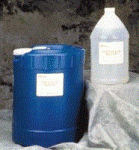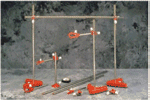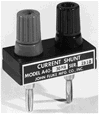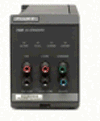
Keranjang
agen jakarta murah FLUKE 5700A/ 5720A Multifunction Calibrators
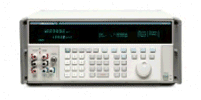
| Kategori | FLUKE |
| Di lihat | 1415 kali |
| Harga | Rp (hubungi cs) |
Detail Produk agen jakarta murah FLUKE 5700A/ 5720A Multifunction Calibrators
 The 5700A and 5720A Multifunction Calibrators are five-function calibrators designed to address the most demanding electrical calibration workload. They source direct and alternating voltage and current and resistance. A wideband voltage option extends overall ac bandwidth to 10 Hz to 30 MHz to cover to RF voltmeters. Both are compatible with the 5725A, and 5205A/ 5215A amplifiers. Both can be automated with MET/ CAL Plus calibration software.
The 5700A and 5720A Multifunction Calibrators are five-function calibrators designed to address the most demanding electrical calibration workload. They source direct and alternating voltage and current and resistance. A wideband voltage option extends overall ac bandwidth to 10 Hz to 30 MHz to cover to RF voltmeters. Both are compatible with the 5725A, and 5205A/ 5215A amplifiers. Both can be automated with MET/ CAL Plus calibration software.
5720A Multifunction Calibrator: The lowest uncertainties of any multifunction calibrator
Since its introduction in 1988, the 5700A Multifunction Calibrator has earned a worldwide reputation for performance, dependability and quality, and as a result it is the calibrator of choice for electrical calibration throughout government and industry.
Today, the 5720A Multifunction Calibrator offers even more. In addition to the dependability, simplified calibration, ease-of-use and worldwide support that has made the 5700A number one, the 5720A offers uncertainty specifications that rival anything available today. Customers can get all the performance they need to calibrate their most demanding workload of multimeters up to 8 1/ 2 digits quickly, easily and reliably. This improvement in performance results from factory testing to even tighter tolerances, and from a variety of hardware and firmware improvements.
5700A Multifunction Calibrator Series II: The world standard
In service since 1988, the 5700A Multifunction Calibrator has undergone continuous improvements to become the 5700A Series II, one of the most tested and reliable high precision calibrators Fluke Calibration has ever produced. Considered the calibration standard worldwide, the 5700A delivers high value as well as accuracy covering 5 1/ 2 to 7 1/ 2 digit dmms. Plus it offers the same ease of use, low cost of ownership, rugged design, simplified support and confidence building features as the 5720A
Specifications available at both 99% and 95% confidence levels
Specifications for both the 5700A and 5720A MultifunctionCalibrators are stated with a choice of confidence levels. Now, you can use the conservative 99% specifications that Fluke traditionally publishes, or more aggressive 95% specifications recommended in many international procedures. In addition to allowing you to trade a small amount of risk for better performance, 95% confidence level specifications allow easier measurement intercomparisons. Both specifications are available at a press of the SPEC key for any output.
Compatibility
Both the 5700A and 5720A Multifunction Calibrators can emulate, via the remote interface, either a 5100B or 5200A calibrator, permitting them to replace those older calibrators in automated systems with little or no impact on software. In addition, it is compatible with the 5725A Amplifier, and 5205A or 5215A Precision Power Amplifiers.
Simplified support with complete confidence
Both the 5700A and the 5720A Multifunction Calibrators feature Artifact Calibration. Only three artifact standards — a 10V dc reference and 1© and 10 k© resistance references are required to calibrate all ranges and functions to full specifications. Front panel instructions prompt the operator to make connections and inputs each step of the way. The calibrator controls the process, which takes only about an hour, compared to several hours using traditional methods.
During the process, assigned values of an external artifact are transferred to a large array of multidimensional parameters within the 5720A. The calibrator takes over the manual metrology functions of establishing ratios and making comparisons, as well as controlling the measurement process.
To assure confidence, the 5700A and 5720A can check themselves against their own internal standards to assure everything is working as expected. Those results can be printed out or downloaded to a computer.
Thousands of 5700A calibrators in service around the world prove Artifact Calibration delivers fast, easy and inexpensive calibration along with the confidence that your instrument is performing as expected between calibrations.

